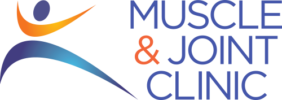Shoulder pain was associated with an injury in one third of office visits with U.S. primary care physicians.*
Shoulder Pain: Why You Get It
The shoulder is the most mobile joint in the body. But this mobility comes at a cost: stability. Shoulder problems, including pain and limited range of motion, are common complaints due to the shoulder’s instability. The shoulder girdle is a complex system consisting of four joints, and more than 20 muscles, tendons and ligaments. They work as a team to stabilize and simultaneously provide motion. If any part of this system stops doing its job the body will compensate, in order to maintain normal function. This compensation will cause overuse of certain muscle groups and weakness of others.
Shoulder Pain: A Highly Mobile Joint
The shoulder is designed as a highly mobile joint to assist us in a wide variety of daily activities. A stiff or painful shoulder can make many of these activities difficult, such as putting on a seat belt or pulling items out of a cabinet. Having poor range of motion puts the shoulder at risk for injury.
Because of the shoulder’s complexity, a broader view must be taken to correct dysfunction and get rid of pain:
- Posture of the neck and shoulders must be considered when addressing a shoulder problem. It is very common for the majority of the day to be spent with the head forward and the shoulders in a forward/rounded position.

- This causes shortened muscles in the front of the body. The muscles in the back become overworked and will often have “muscle knots.”
- This muscle imbalance frequently leads to pain, buildup of scar tissue, and decreased range of motion in the shoulder.
Shoulder Pain: Rotator Cuff Injuries
The rotator cuff is the set of muscles that keep the arm attached to the body. Larger muscles, like the biceps and triceps move the arm, but you need the rotator cuff to allow the arm to move fully and pain-free. When the rotator cuff has the smallest bit of dysfunction, the arm starts moving excessively in the shoulder socket. This causes pain and arthritis. The larger muscles will then tighten up, trying to prevent excessive movement. They will, but at the cost of lost range of motion. Restoring balance to the rotator cuff and larger muscles and building their endurance is a keystone to getting the shoulder out of pain and restoring full range of motion.
Shoulder Pain: Treatment
Using state-of-the-art posture screening software and functional tests, Muscle & Joint Clinic prioritizes the causes of your shoulder problem. Treatment will focus on restoring mobility and strength to the shoulder girdle. By removing scar tissue, lengthening shortened tissues, correcting poor posture and strength training, many shoulder problems can be resolved permanently.
*Source: BMC Musculoskeletal Discord (2005)


